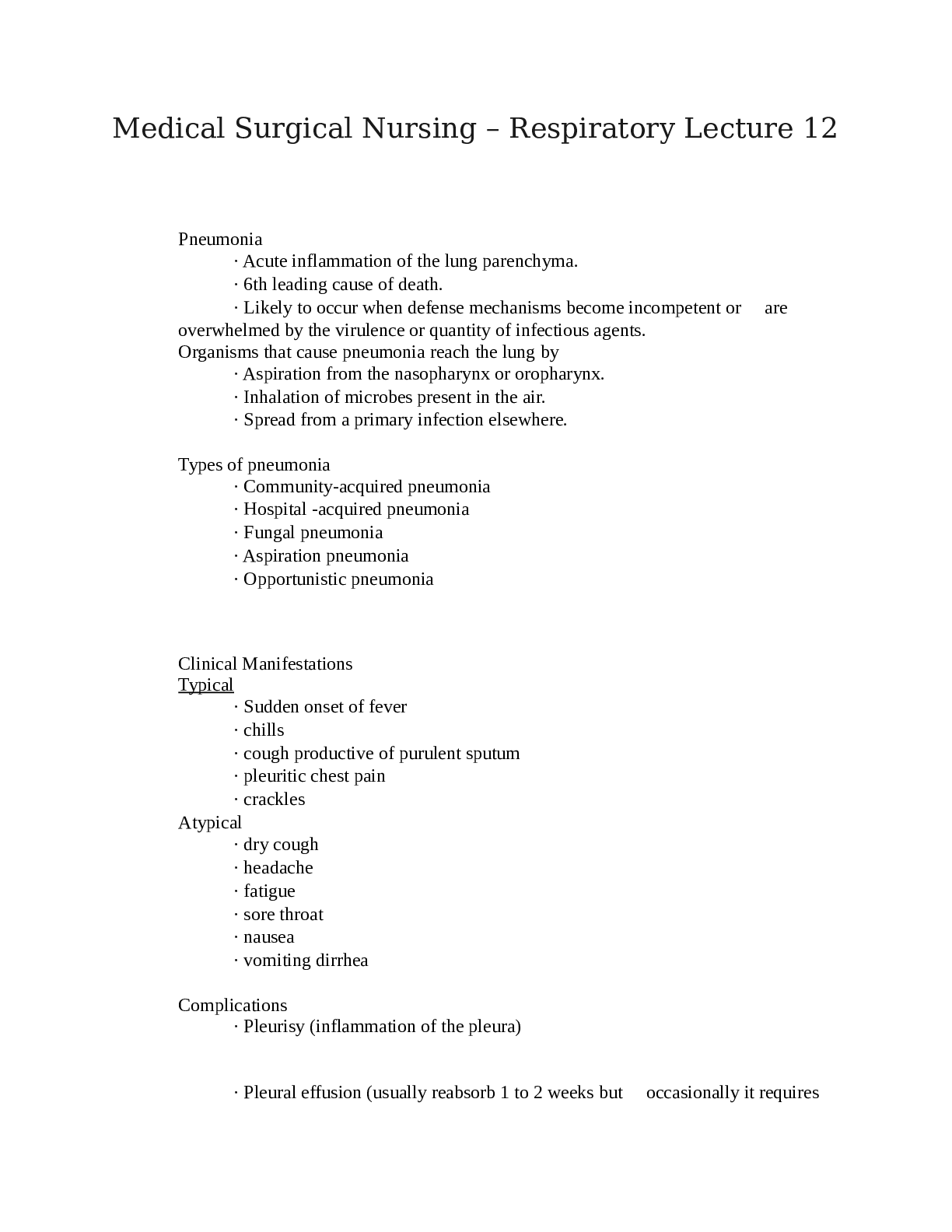Medical Surgical Nursing – Respiratory Lecture 12
Course
Project Management
Subject
Chemistry
Category
Study Guide
Pages
15
Uploaded By
ATIPROS
Preview 4 out of 15 Pages
.png)

Download all 15 pages for $ 12.00
Reviews (0)
$12.00
